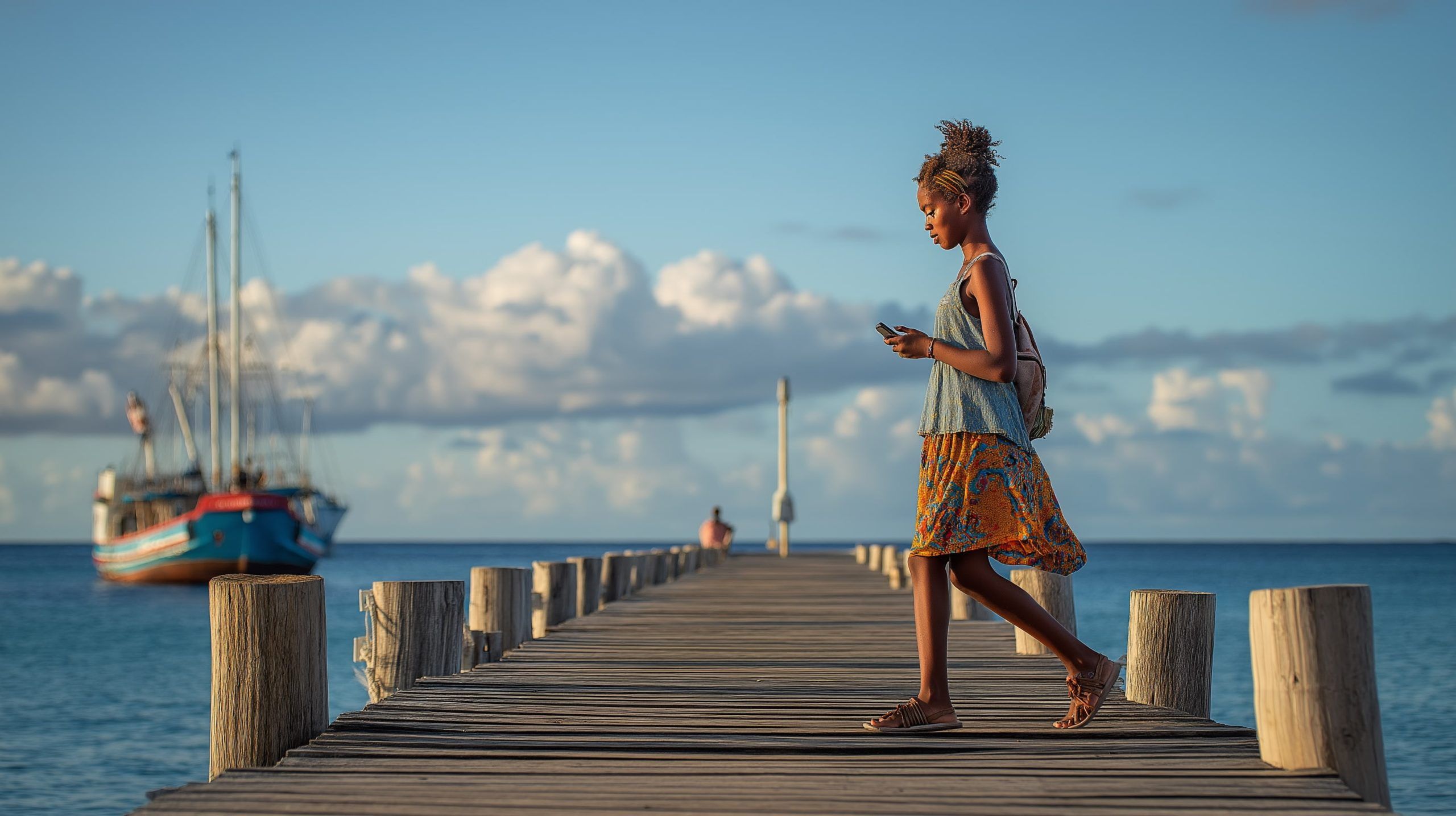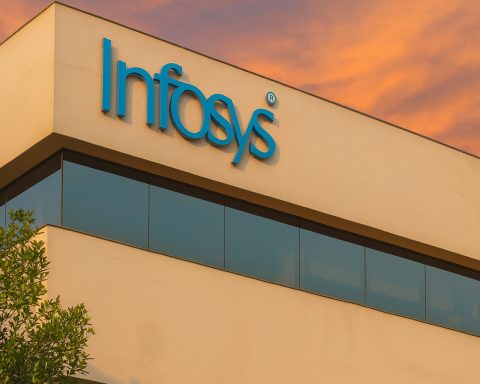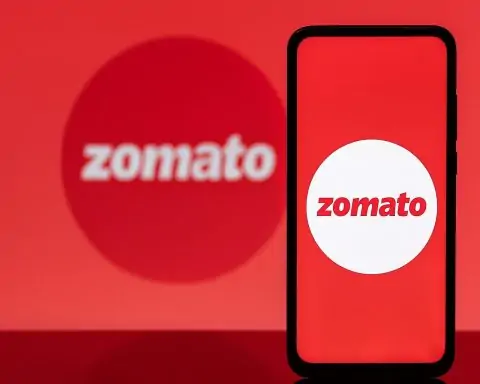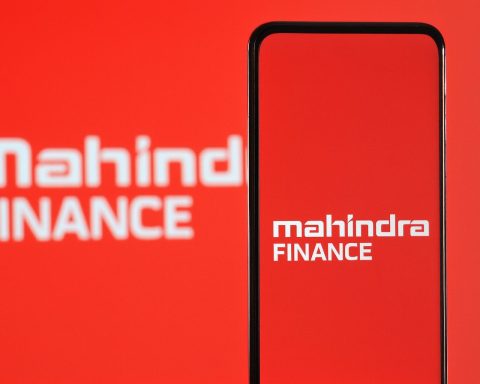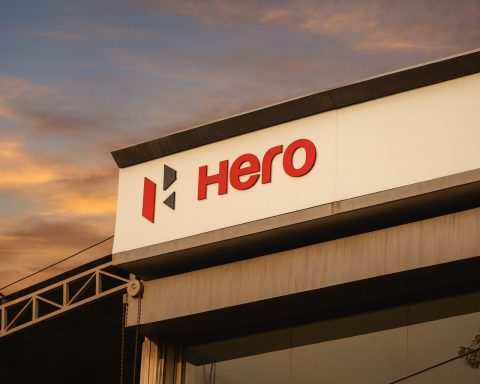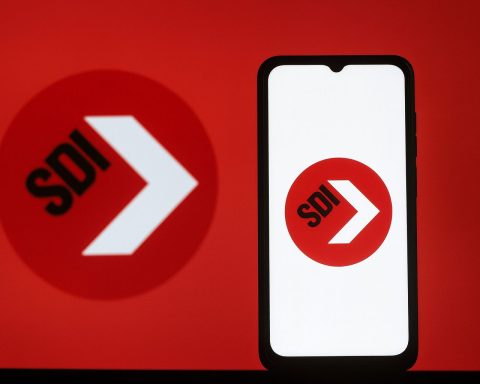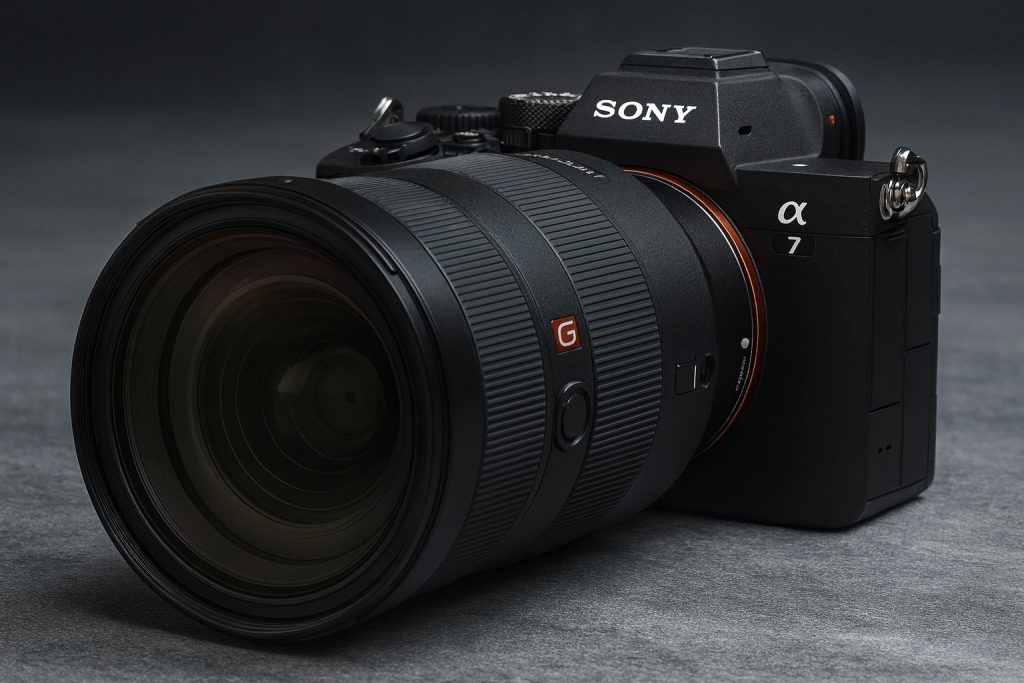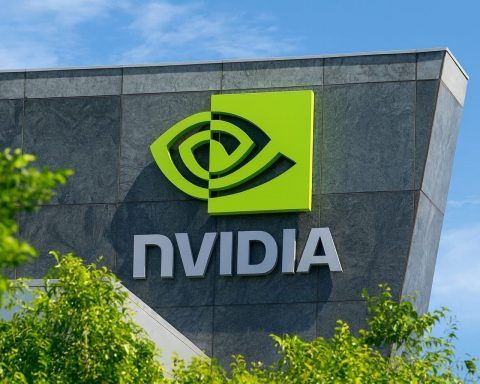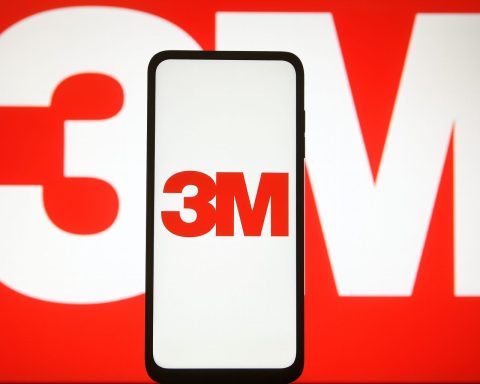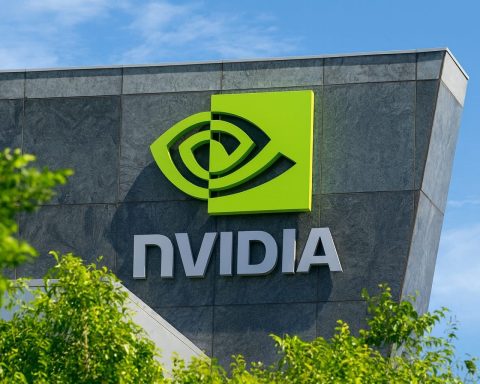- In 2019, the World Bank–funded CARCIP project installed a subsea fiber-optic cable linking St. Vincent to the Grenadines, with over 150 miles laid by late 2019 and open access for both Digicel and Flow.
- Flow’s Bequia upgrade in 2021 migrated services from copper DSL and microwave backhaul to hybrid fiber-coax, delivering minimum speeds of 50 Mbps and top tiers around 250 Mbps, a 25× average speed increase.
- Digicel+ Fiber was launched as SVG’s 100% fiber-to-the-home network, with residential plans from 250 Mbps down (125 Mbps up) to 500 Mbps down (250 Mbps up), roughly EC$129/month for Fibre 250 and EC$225/month for Fibre 500.
- Mayreau gained faster connectivity by connecting to Union Island’s fiber node via a shorter wireless hop after the 2019 fiber cable did not land there, with typical speeds around 30 Mbps compared with sub-1 Mbps days.
- Starlink became officially available in Saint Vincent and the Grenadines in 2025, offering typical 50–200 Mbps down, 20–40 Mbps up, 30–50 ms latency, with Residential at about US$120/month plus a one-time US$600 dish, and a Residential Lite option around US$80.
- In mid-2024 the government deployed 50 Starlink terminals costing about EC$227,000 to Union Island to provide emergency connectivity for responders and community hubs, demonstrating Starlink’s disaster resilience use case.
- By mid-2024, 4G LTE networks from Flow and Digicel covered all inhabited Grenadine islands, with 20–60 Mbps speeds in strong signal areas and population coverage exceeding 95%.
- GEO satellite services (HughesNet, ViaSat) can provide 5–15 Mbps with high latency around 600 ms, but OneWeb remained inactive in SVG, making Starlink the dominant satellite option.
- The Grenadines now share the same fiber backbone as Saint Vincent, with typical consumer fixed broadband speeds of 250–500 Mbps, while the mainland can reach up to 1000 Mbps via Digicel Fiber and 300+ Mbps via Flow DOCSIS 3.1 in certain districts.
- The Universal Service Fund, managed by the NTRC, subsidizes underserved areas with free community Wi‑Fi hotspots and discounted internet for low‑income households, while tablets were distributed to students and e-government services expanded online.
The Grenadines – a chain of idyllic islands including Bequia, Mustique, Canouan, Union Island, Mayreau, and more – are rapidly shedding their past reputation of sluggish internet. In 2025, these tropical gems enjoy unprecedented connectivity options: subsea fiber-optic cables now link key islands to high-speed broadband, 4G LTE mobile networks blanket most populated areas, and satellite internet (like SpaceX’s Starlink) is emerging as a game-changer for remote access. This report provides a comprehensive look at internet access across the Grenadines, covering current infrastructure, providers, service types (fiber, mobile, fixed wireless, satellite), coverage and performance, ongoing challenges, and practical insights for residents, tourists, digital nomads, and investors alike.
Overview: How the Grenadines Got Connected
For years, the remote Grenadine islands grappled with limited and unreliable connectivity. Older systems relied on narrowband microwave links beaming signals over long distances from St. Vincent, resulting in slow speeds and frequent outages [1] [2]. That began to change in 2019, when a World Bank-funded project (CARCIP) helped install a subsea fiber-optic cable network linking St. Vincent to the major Grenadines. This new fiber backbone connected Bequia, Mustique, Canouan, and Union Island, with further links onward to Grenada [3] [4]. By late 2019, over 150 miles of fiber had been laid, bringing a “broadband backbone rivaling Singapore” to even the smaller islands [5] [6].
Crucially, the government’s partnership with Digicel (a leading telecom provider) ensured “open access” to the subsea cable for all operators [7]. This means both major ISPs in the country – Digicel and Flow (Cable & Wireless/Columbus Communications) – can leverage the fiber links to deliver improved service in the Grenadines. In short, as of 2025 the Grenadine islands have a far more robust infrastructure foundation: fiber-optic bandwidth feeding local networks, modern LTE mobile towers, and new satellite options, all converging to connect these once-isolated communities to the digital world.
Fiber-Optic Broadband Across the Islands
The advent of fiber has been transformational. On islands where the new subsea cable lands (Bequia, Mustique, Canouan, Union), residents and businesses now enjoy high-speed fixed broadband on par with mainland St. Vincent. Both Flow and Digicel have rolled out services:
- Flow (Cable & Wireless) – Upgraded its networks from old copper DSL and microwave backhaul to hybrid fiber-coax (HFC) systems fed by the subsea fiber. In Bequia, for example, Flow migrated all services to the new fiber link in 2021. Customers who once limped along with ~2 Mbps ADSL now can get minimum 50 Mbps speeds via cable modems, with top tiers around 250 Mbps download [8]. Impressively, Flow achieved a 25× increase in average internet speeds in the Grenadines after the upgrade [9]. Similar upgrades are in progress or completed on Canouan and Mayreau, where Flow has been rehabilitating old cable TV networks to deliver broadband [10]. Mustique – which has a privately managed utility infrastructure – also benefits from fiber; Flow notes that Mustique’s network is largely underground and high-capacity, contributing to smoother service [11].
- Digicel – As the government’s PPP partner for the CARCIP project, Digicel had early access to the new fiber. It launched Digicel+ Fiber services, branding itself as the only 100% fiber-to-the-home network in St. Vincent & the Grenadines. Digicel offers residential fiber plans starting at 250 Mbps download (with ~125 Mbps upload) and scaling up to 500 Mbps download (250 up) for high-end users [12] [13]. For example, the “Fibre 250” plan costs roughly EC$129 (≈US$48) per month [14], while the top “Fibre 500” plan is about EC$225 (~US$83) monthly. These plans include unlimited data and even bundled perks (e.g. complimentary streaming subscriptions) to add value. Digicel’s fiber network now passes through all major communities on St. Vincent and the connected Grenadines, enabling residents of Bequia, Canouan, Union Island, Mustique, and some smaller villages to get fiber drops right to their homes or businesses (subject to service rollout in each area).
Mayreau, the smallest inhabited Grenadine with ~300 people, has a slightly different setup. The 2019 fiber cable did not land on Mayreau, but the new infrastructure greatly improved Mayreau’s connectivity by shortening its wireless hop. Instead of a long microwave link direct from St. Vincent (60+ km) – which was “strained… slow and limited in bandwidth” [15] – Mayreau now connects via a shorter wireless link to Union Island’s fiber node [16] [17]. By the end of 2019, officials promised a “markedly enhanced” internet experience on Mayreau: faster speeds, more reliable signals, and far less weather-related disruption [18]. Indeed, Mayreau’s typical internet speeds jumped to around 30 Mbps in recent years (a huge leap from sub-1 Mbps days), making basic broadband available to the community [19] [20].
Overall, fiber-fed broadband has narrowed the digital gap between the Grenadines and the mainland. Users on islands like Bequia and Canouan can stream HD video, join Zoom calls, and run online businesses in ways that were barely possible a few years ago. High-bandwidth applications (telemedicine, cloud services, security systems, etc.) are now viable across these islands thanks to the “quantum leap” in connectivity quality [21] [22].
Mobile Networks and Fixed Wireless Coverage
Staying connected in the Grenadines isn’t just about wired broadband – mobile networks play a vital role in everyday connectivity, for both locals and visitors. The country’s two telecom operators, Flow and Digicel, each operate mobile networks covering St. Vincent and the Grenadines. Key features of mobile access in the Grenadines include:
- 4G LTE Coverage: Both Digicel and Flow have built out 4G LTE coverage to all the inhabited Grenadine islands. Even smaller isles like Mayreau and Petit St. Vincent have coverage (usually from nearby towers on Union or other larger islands). According to government reports, by mid-2024 Flow’s mobile service was working properly in Bequia and had only minor outages in Canouan (after a storm), while Digicel boasted about 90% coverage of mainland St. Vincent and was restoring Grenadines coverage post-storm [23] [24]. In normal times, both networks provide voice, text, and data across the islands, with population coverage well above 95%. Tourists island-hopping by yacht often remain in reach of a cell tower for most of their journey through the cays.
- Mobile Data Speeds: While there’s no 5G yet in SVG, the 4G LTE networks typically support download speeds in the tens of Mbps range. In strong signal areas (e.g. near a tower in Port Elizabeth, Bequia or in Clifton, Union Island), users often report 20–60 Mbps on LTE – enough for heavy app usage. However, speeds can drop in more remote coves or inside some buildings. Both carriers have been gradually adding capacity. Notably, in the wake of infrastructure upgrades, Flow can use its new fiber links as backhaul for LTE sites, eliminating the capacity bottlenecks that older microwave backhaul imposed [25] [26]. This means less network congestion and better data performance during peak hours on the islands than in the past.
- Fixed Wireless and Hotspots: Before fiber, some Grenadine residents relied on fixed wireless solutions (like WiMAX or point-to-point radios) for home internet. Today, those are largely supplanted by fiber/cable or mobile data. However, Digicel and Flow do offer 4G-based fixed wireless plans in areas where running cables is impractical. For instance, a remote hilltop villa might use a special LTE router as its primary internet if wired service is not available. In addition, entrepreneurial locals and marinas provide Wi-Fi hotspots in ports. In Union Island’s Clifton Harbor, an “Internet Café” and Erika’s Marine Services have long offered Wi-Fi for yachts, extending connectivity to boaters [27]. With fiber now onshore, these hotspot services can pull much faster internet to redistribute over Wi-Fi. The National Regulatory Commission (NTRC) has also sponsored some free community Wi-Fi zones – e.g. at community centers and resource facilities on Union Island [28] – to help bridge access gaps for those who can’t afford service.
Network Coverage Caveats: Despite the overall good coverage, signal strength can vary on the hilly terrain. Each major island typically has at least one cell tower: Bequia and Union have multiple sites to cover their area, Canouan and Mustique each have a tower (Mustique’s network is robust, often using underground fiber links for distribution) [29], and Mayreau depends on coverage from Union/Canouan towers or small repeaters. During extreme weather or power outages, these towers can go down. (For example, after a severe storm in 2024, 100% of Digicel’s sites on Union Island went offline and even Mayreau’s lone site was lost [30] [31], requiring temporary mobile cells and generators to restore service.) In normal conditions though, residents and visitors can generally rely on their smartphones for connectivity anywhere there’s a village or resort in the Grenadines.
The Rise of Satellite Internet (Starlink and More)
Perhaps the most exciting new option for internet in the Grenadines is satellite broadband, especially Elon Musk’s Starlink Low-Earth Orbit (LEO) service. Satellite internet has long been used in a pinch on these islands – for instance, some remote villas on Mustique reportedly used legacy VSAT systems like HughesNet in the past – but high cost and latency made it a last resort. That is rapidly changing:
- Starlink Availability: Starlink’s constellation of low-orbit satellites became officially available in Saint Vincent & the Grenadines in 2025, as part of the service’s Caribbean expansion [32] [33]. In fact, government officials confirmed that Starlink obtained a local license and was slated for launch in SVG by 2025 [34]. By April 2025, Starlink announced via social media that its “high-speed, low-latency internet is now available in Saint Vincent and the Grenadines!” [35]. This means residents anywhere from the busy harbor in Bequia to a quiet beach on PSV can now order a Starlink kit, provided they have a clear view of the sky.
- Starlink Performance: In the Grenadines, Starlink delivers typical download speeds of 50–200 Mbps, upload ~20–40 Mbps, with latency around 30–50 ms – dramatically better than old satellite services [36] [37]. The service is high-throughput and low-latency enough for Zoom calls, HD streaming, online gaming, and large file transfers, which historically were painful over satellite [38] [39]. Importantly, Starlink’s beam is resilient in the tropical climate – the dish (“Dishy”) can withstand rain and wind, and even self-heats to melt any rare dew or sea-salt accumulation [40] [41].
- Cost and Plans: Starlink Residential plans in the Caribbean run about US $120 per month for unlimited data (roughly EC$324), plus a one-time hardware cost (~$600 for the dish kit) [42] [43]. There’s also a new “Residential Lite” plan around $80 with deprioritized data for lighter users [44] [45]. While this pricing is higher than local wired packages, the ability to get 100+ Mbps anywhere – even on a sailboat or tiny islet – is a significant breakthrough. Yacht cruisers, in particular, have eagerly embraced Starlink Roam plans (approx $150/month for regional coverage) to stay connected while exploring the Grenadines [46]. Now that SVG is an officially approved Starlink country, even liveaboard sailors can legally use these satellite units during their 60-day cruising permits [47].
- Other Satellite Services: In addition to Starlink, a few other satellite options exist. OneWeb, another LEO satellite network, is on the horizon but not yet active in the region. Traditional geostationary (GEO) satellites like ViaSat or Hughes can provide broadband in the Grenadines, but with lower speeds (often 5–15 Mbps) and high latency (~600 ms). Companies such as GlobalTT and BusinessCom advertise VSAT plans in SVG, targeting businesses or remote sites [48] [49]. These typically cost several hundred US dollars per month for modest bandwidth. As such, GEO satellite is now mostly a fallback or enterprise solution, while Starlink is the headline option bringing satellite internet into the mainstream for these islands.
- Government & Emergency Use: The SVG government itself has leveraged Starlink for resiliency. In mid-2024, after a hurricane damaged cell towers and cables in the Southern Grenadines, the government deployed 50 Starlink units as an emergency measure [50] [51]. These units – costing around EC$227,000 total – were installed in places like Union Island to instantly restore connectivity for emergency responders and community hubs [52] [53]. Officials noted that Starlink, combined with mobile “cell on wheels” units, would help fill coverage gaps until permanent infrastructure was rebuilt [54] [55]. This real-world test proved Starlink’s value in disaster recovery, a critical consideration for hurricane-prone regions.
Bottom line: Satellite internet is now a viable option in the Grenadines, whether as a backup for a business on Canouan, a primary link for a remote cay with no other service, or simply a way for a tourist to ensure connectivity on a sailing adventure. It complements the terrestrial networks and adds a new layer of resilience to the islands’ connectivity landscape.
Challenges and Ongoing Initiatives
Despite tremendous progress, the Grenadines still face some connectivity challenges. The geography – dozens of small islands scattered over 40+ miles of sea – means reaching everyone is costly. Here are key issues and efforts:
- Coverage Gaps: Virtually all populated areas now have some form of internet, but a few spots remain tricky. For example, very remote residences (an isolated cottage on a small private island, or a hilltop farm) might be out of range of DSL/cable and only weakly covered by mobile. These users may need to rely on satellite or wait for providers to extend last-mile networks. The good news is that, with fiber backbone in place, ISPs can consider fixed wireless or microwave link extensions to cover remaining pockets. The Universal Service Fund (managed by the NTRC) continues to subsidize connectivity in underserved areas – including funding public Wi-Fi hotspots (one on Union Island, etc.) [56] [57] and subsidized internet for low-income households and students [58].
- Digital Divide: As elsewhere, affordability and digital literacy are concerns. Broadband in SVG, while cheaper than a few years ago (cost per megabit has dropped sharply), is still a significant expense for lower-income families. A 250 Mbps plan at ~EC$129/month is nearly 5% of average monthly income for some. To mitigate this, the government has distributed tablets to students and arranged discounted service plans for thousands of households [59]. Community centers with free internet access offer those without subscriptions a way to get online. There’s also a continuing push in education and training to help residents make full use of the internet once they have it. The gap between the well-connected (e.g. luxury villas with fiber or Starlink) and those still coming online is narrowing, but ongoing attention is needed.
- Infrastructure Resilience: The Grenadines’ communications infrastructure is vulnerable to natural disasters. Hurricanes, tropical storms, and even the ashfall from La Soufrière volcano (which erupted on St. Vincent in 2021) can disrupt service. For instance, the 2024 storm damaged overhead cables and toppled at least one cell tower in Canouan and all of Digicel’s towers on Union/Mayreau [60] [61]. Power outages are also a problem – island grids can go down in bad weather, taking out modems, cell sites (after backup batteries deplete), etc. To address this, providers are enhancing resilience: Flow noted it is “rebirthing” its networks in the Grenadines to improve resilience and reduce outages [62]. Mustique sets an example with underground cabling that kept its network “operating smoothly” through the 2024 storm [63]. The government and telecoms now often pre-deploy mobile backup equipment (generators, portable cell sites) in hurricane season. Starlink’s role as emergency backup is also part of the resilience strategy [64]. These measures aim to ensure that even if the primary infrastructure takes a hit, the islands won’t be completely cut off.
- Bandwidth Demand Growth: The flip side of improved internet is that usage is skyrocketing. Islanders are streaming Netflix, running online businesses, tourists expect ubiquitous Wi-Fi, and yachts stream Spotify in the bays. This surging demand will test network capacity. The current fiber and LTE networks have ample headroom (the CARCIP fiber ring was built to scale up dramatically), but continuous investment is needed. Both Digicel and Flow have hinted at future upgrades – from exploring 5G in a few years, to increasing fiber-to-the-premises coverage, to possibly offering gigabit-tier home service. The government views ICT as a pillar of development and is likely to facilitate spectrum, licensing, and incentives to keep capacity ahead of demand [65] [66].
Comparison to Mainland Saint Vincent
How does internet in the Grenadines stack up against mainland Saint Vincent? In many respects, the gap has closed:
- Broadband Infrastructure: The mainland (population ~100k) has long had fiber links and multiple ISPs in the capital, Kingstown. Now, thanks to the new submarine cable network, the same fiber backbone runs through the Grenadines [67] [68]. This means core network capacity available to the islands is equivalent to that on St. Vincent. In fact, officials have mused that SVG’s broadband backbone is now “better than many advanced nations” per capita [69]. Mainlanders do have a few more choices – e.g. some areas in town can get Flow’s DOCSIS 3.1 cable at 300+ Mbps or Digicel’s fiber at 1000 Mbps (in select business districts). In the Grenadines, most retail plans top out at 250–500 Mbps for now, but those speeds are effectively the same as what most Vincies use on the mainland.
- Mobile Networks: Both Digicel and Flow operate country-wide networks, so mobile coverage and performance on the mainland is slightly better simply due to more towers and denser coverage in populated corridors. St. Vincent island has dozens of cell sites, including newer LTE-A sites in Kingstown that can offer higher peak speeds than any single tower in the Grenadines. That said, everyday 4G experiences are comparable – a user in Bequia or Union can get similar speeds and service quality as one in rural areas of St. Vincent. One difference: during the April 2021 volcanic eruption on St. Vincent, some mobile sites on the mainland’s north fell offline due to power and ash. The Grenadines, spared from the ash cloud, maintained communications and even sheltered evacuees, highlighting that connectivity challenges can swing both ways.
- Service Pricing: Internet service costs are basically uniform across the nation. Digicel and Flow price their home packages the same in the Grenadines as in St. Vincent (aside from occasional promotions). For example, Flow’s 100 Mbps cable plan or Digicel’s 250 Mbps fiber plan cost the same monthly whether you’re in Kingstown or Port Elizabeth. Mobile data plans and bundles are identical across SVG. Where there is a difference is installation logistics – hooking up a new fiber/cable line on a small island might face more delays (waiting for a technician’s monthly visit, for instance) than on the mainland. Moreover, if equipment breaks on a remote island, replacements can take longer to arrive. But these are minor quibbles in an era when a Union Island resident can watch YouTube in HD for the same price and speed as a Kingstown resident.
- Adoption and Usage: Mainland St. Vincent has a larger user base and perhaps higher overall internet penetration (urban areas naturally have more customers). The Grenadines historically lagged in internet adoption, but this is changing fast. With tourism businesses and expat homeowners leading the way, islands like Bequia likely now have a higher household broadband penetration percentage than some areas of St. Vincent. The government’s digital initiatives (e-government services, online education platforms) are equally accessible from the Grenadines now that broadband is widely available. One notable contrast: the Grenadines depend more on satellite connectivity for backup. On the mainland, redundancy comes from multiple terrestrial links (fiber routes and microwave hops) – for instance, if one undersea cable to St. Vincent fails, traffic can reroute via a different path. The Grenadine islands are more at risk of isolation if their single fiber spur is cut (though microwave backup exists in some cases). Starlink and similar services thus play a more prominent role as a fail-safe in the Grenadines than on St. Vincent proper.
In summary, the experience of getting online in the Grenadines today is nearly on par with the mainland. That’s a dramatic improvement from a decade ago, when the mainland enjoyed 10 Mbps DSL while some outer islands had dial-up or none at all. The policy of extending infrastructure inclusively across the entire nation – even to tiny cays – means the digital divide between the capital and the outer islands has been greatly reduced.
Tips and Recommendations for Users
- For Residents: If you live in the Grenadines, check which broadband options reach your home. On the larger islands, fiber or cable broadband (Digicel or Flow) will offer the best speeds and unlimited usage – ideal for families, remote workers, and heavy streamers. Prices start around EC$120–$150/month for base plans (which is well worth it if multiple people are using the connection). Sign up for fiber if available; it offers lower latency and higher reliability than older DSL or fixed wireless. In areas awaiting fiber rollout or if you only need light use, a 4G LTE home modem with a data plan could suffice (Digicel and Flow both sell these). Keep an eye on community Wi-Fi hotspots too – NTRC’s Vincy WiFi initiative provides free internet in certain public spots (e.g. community centers on Union) which can supplement your home service [70]. Finally, consider a backup power supply (UPS or small generator) for your modem/Wi-Fi router – our islands are prone to blackouts, and this can keep you online during short outages.
- For Tourists: Visitors will be pleasantly surprised that even in these “off-the-grid” islands, getting online is easy. Most hotels, villas, and guesthouses now boast high-speed Wi-Fi, thanks to upgrades via fiber [71] [72]. If you’re staying in a villa on Mustique or a resort on Canouan, you can expect speeds that handle Zoom and streaming (often those properties have dedicated fiber or microwave links). It’s still wise to buy a local SIM card for your phone – Digicel and Flow both offer tourist SIMs or pay-as-you-go plans with data, which are cheaper than roaming fees. Coverage is good on all the main cays, and you’ll appreciate having mobile data when exploring beaches or hiking. If you’re sailing, note that cell coverage extends through the Tobago Cays marine park and most anchorages (albeit sometimes slow). Many yachties now bring a Starlink Roam unit onboard for unlimited internet at sea – a game-changer for staying connected. But even without it, you can find Wi-Fi at yacht clubs, beach bars, and harbors (ask about Wi-Fi passwords at marinas or use services like the Clifton harbor Wi-Fi). Enjoy the islands, but maybe save heavy downloading for late at night when fewer people are online.
- For Digital Nomads: Yes, you can be a digital nomad in the Grenadines! Islands like Bequia and Union Island offer a laid-back lifestyle with sufficient connectivity for remote work. To make it work, secure accommodation that explicitly advertises a reliable internet connection – ideally fiber or cable broadband. Many rental villas and Airbnb hosts in the Grenadines now tout their “high-speed Wi-Fi (Digicel fiber)” in listings [73]. Speeds of 50–100 Mbps are common, which is ample for video conferences, coding, or content uploading. It’s smart to have redundancy: get a SIM card for your phone and/or a portable 4G hotspot device as a backup if the wired internet goes down. Co-working spaces are rare (the vibe here is more hammock than office), but you’ll find cafes and hotel lobbies in Port Elizabeth or Clifton where you can work with a coffee and decent Wi-Fi. Power outages can occur, so working with a charged laptop and a UPS for your router can save the day. Culturally, the pace is slower and businesses may close early, but the flip side is a stress-reduced environment. If you require absolute reliability, you could even invest in Starlink for your stay – some long-term visitors have installed Starlink dishes on rented rooftops to ensure 24/7 connectivity for trading or other bandwidth-heavy jobs. Overall, the Grenadines now strike a compelling balance between paradise and productivity for the adventurous remote worker.
- For Investors and Businesses: The improved internet infrastructure makes the Grenadines more attractive for various investments. If you’re considering opening a tourism business (resort, dive shop, restaurant), rest assured you can get enterprise-grade connectivity. Both Flow and Digicel offer dedicated business circuits, and metro Ethernet or MPLS links can be provisioned via the fiber network to islands like Mustique and Canouan [74]. Reliable internet means you can install modern point-of-sale systems, offer guest Wi-Fi as an amenity, and even run cloud-based management software from these islands. The presence of Starlink adds an extra layer of confidence – even if the terrestrial network fails, you can stay online via satellite, which is crucial for continuity (imagine a hotel being able to maintain online bookings and communications through a hurricane aftermath thanks to Starlink). Investors in real estate will find that villas with strong internet fetch higher rental and sale values – connectivity is now a must-have feature, even in paradise. Additionally, the government’s push for ICT development means there may be incentives or support for tech-related ventures. For instance, a software startup could feasibly base itself in St. Vincent and have team members working remotely from the Grenadines, since internal bandwidth is high and one can hop on the ferry or a short flight to the mainland when needed. In short, the barrier that poor internet once posed to business in the Grenadines is disappearing. With prudent planning and backup solutions, operating even mission-critical online services from these islands is increasingly viable.
Conclusion
The Saint Vincent Grenadines have entered a new era of connectivity. From Bequia’s busy Admiralty Bay to the tranquil shores of Mayreau, islanders and visitors alike can tap into fast, modern internet through a variety of means – be it fiber-optic cables snaking under turquoise seas, 4G signals beaming from hilltop towers, or satellites streaking across the sky. The current infrastructure includes a state-of-the-art fiber backbone and steadily improving last-mile networks that cover the populated islands. Major providers Digicel and Flow offer speeds and prices competitive with the region, bringing the Grenadines on par with (and sometimes exceeding) the connectivity on the mainland [75] [76]. Meanwhile, satellite internet (especially Starlink) provides an extraordinary opportunity to leapfrog remaining gaps, ensuring that even the most remote beach house or sailboat can stay online [77] [78].
Challenges remain – tropical storms will test the resilience of networks, and ensuring equitable access for all residents is an ongoing task – but the trajectory is overwhelmingly positive. The government’s proactive approach (investing in infrastructure and emergency backups) combined with private sector innovation has made the Grenadines a case study in bridging the digital divide for small islands. For anyone in the Grenadines, the advice is clear: take advantage of the options now available. Whether you’re uploading drone footage of the Tobago Cays, managing bookings for a boutique hotel on Mustique, or Skype-ing with family from a hammock on Union Island, the internet in the Grenadines is ready to serve. This string of pearls in the Caribbean is more connected than ever – truly a 21st-century paradise.
Table 1: Internet Service Options in the Grenadines (Summary)
| Service Type | Providers | Coverage (Key Islands) | Typical Speeds | Approx. Monthly Cost |
|---|---|---|---|---|
| Fixed Broadband (Fiber/HFC) | Digicel (Fiber-to-home), Flow (Cable/HFC) | Bequia, Mustique, Canouan, Union; partial on Mayreau | 50–250 Mbps (Flow HFC) [79] 250–500 Mbps (Digicel Fiber) [80] | ~EC$129 for 250 Mbps (Digicel) [81] ~EC$99 for ~50–100 Mbps (Flow) |
| Mobile Data (4G LTE) | Digicel, Flow | All inhabited islands (close to 100% pop. cov.) | ~10–60 Mbps (user experience) | Prepaid data packs from ~EC$20 (e.g. 1GB+) |
| Fixed Wireless (LTE/Radio) | Digicel, Flow, local Wi-Fi providers | Select spots lacking wired lines; yacht harbors | ~5–20 Mbps (older WiMAX/Wi-Fi) Up to 50 Mbps (4G router) | Similar to home broadband plans or pay-per-use for Wi-Fi (e.g. EC$10/hour at cafes) |
| Satellite Internet (LEO) | Starlink | Everywhere (requires clear sky view) | 50–200 Mbps down / 20–40 up [82] | ~US$120 (EC$320) for unlimited [83] + one-time ~$600 equipment [84] |
| Satellite Internet (GEO) | VSAT providers (HughesNet, etc.) | Anywhere (often used in remote or backup cases) | 5–15 Mbps down / <5 up (high latency) | High cost: US$200+ monthly per limited data packages |
Pricing: Flow’s pricing varies by speed and promotions; EC$99 is an estimated entry price on mainland SVG for ~60 Mbps, which may apply similarly in the Grenadines. Both Flow and Digicel frequently run promotional rates for new customers.
Sources: Subsea fiber deployment info [85] [86]; Flow network upgrade details [87]; Digicel fiber plan pricing [88]; Starlink availability and government use [89] [90]; Hurricane impact on networks [91] [92]; Mayreau connectivity improvements [93]; Union Island Wi-Fi [94]; others as cited above.
References
1. www.searchlight.vc, 2. www.searchlight.vc, 3. finance.gov.vc, 4. www.searchlight.vc, 5. www.searchlight.vc, 6. www.searchlight.vc, 7. www.searchlight.vc, 8. www.searchlight.vc, 9. www.searchlight.vc, 10. www.searchlight.vc, 11. www.stvincenttimes.com, 12. www.digicelgroup.com, 13. www.digicelgroup.com, 14. www.digicelgroup.com, 15. www.searchlight.vc, 16. www.searchlight.vc, 17. www.searchlight.vc, 18. www.searchlight.vc, 19. www.searchlight.vc, 20. nomad.watch, 21. www.searchlight.vc, 22. www.searchlight.vc, 23. www.stvincenttimes.com, 24. www.stvincenttimes.com, 25. www.searchlight.vc, 26. www.searchlight.vc, 27. en.wikipedia.org, 28. ntrc.vc, 29. www.stvincenttimes.com, 30. www.stvincenttimes.com, 31. www.stvincenttimes.com, 32. blog.telegeography.com, 33. starlinkinsider.com, 34. blog.telegeography.com, 35. en.wikipedia.org, 36. blog.telegeography.com, 37. blog.telegeography.com, 38. blog.telegeography.com, 39. blog.telegeography.com, 40. www.starlink.com, 41. www.starlink.com, 42. www.stvincenttimes.com, 43. www.stvincenttimes.com, 44. www.starlink.com, 45. www.starlink.com, 46. adishnetservices.com, 47. www.facebook.com, 48. www.bcsatellite.net, 49. www.globaltt.com, 50. www.stvincenttimes.com, 51. www.stvincenttimes.com, 52. www.stvincenttimes.com, 53. www.stvincenttimes.com, 54. www.stvincenttimes.com, 55. www.stvincenttimes.com, 56. ntrc.vc, 57. www.ntrc.vc, 58. www.searchlight.vc, 59. www.searchlight.vc, 60. www.stvincenttimes.com, 61. www.stvincenttimes.com, 62. www.searchlight.vc, 63. www.stvincenttimes.com, 64. www.stvincenttimes.com, 65. www.searchlight.vc, 66. www.searchlight.vc, 67. www.searchlight.vc, 68. finance.gov.vc, 69. www.searchlight.vc, 70. ntrc.vc, 71. www.searchlight.vc, 72. www.searchlight.vc, 73. thelookoutbequia.com, 74. access.apc.org, 75. www.searchlight.vc, 76. www.searchlight.vc, 77. blog.telegeography.com, 78. www.stvincenttimes.com, 79. www.searchlight.vc, 80. www.digicelgroup.com, 81. www.digicelgroup.com, 82. blog.telegeography.com, 83. www.starlink.com, 84. www.stvincenttimes.com, 85. finance.gov.vc, 86. www.searchlight.vc, 87. www.searchlight.vc, 88. www.digicelgroup.com, 89. blog.telegeography.com, 90. www.stvincenttimes.com, 91. www.stvincenttimes.com, 92. www.stvincenttimes.com, 93. www.searchlight.vc, 94. en.wikipedia.org
